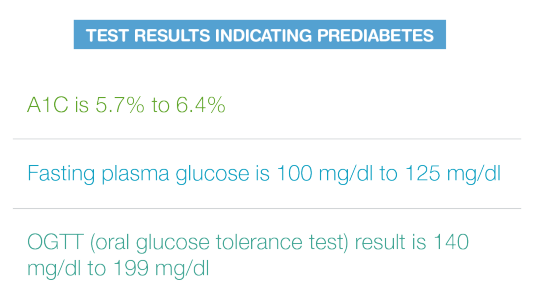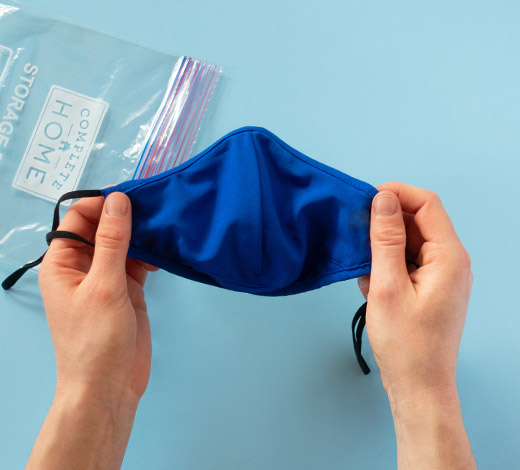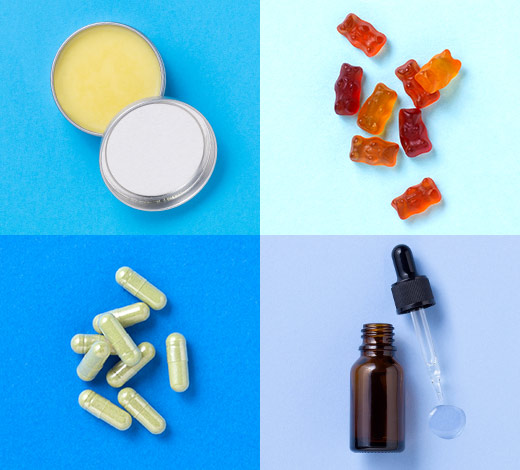
Your physician just said you might have prediabetes and you’re in shock. You don’t even know what prediabetes is, and all you can think of is needles and insulin injections!
Take a deep breath — prediabetes is a call to action, not necessarily a definitive path to diabetes. It’s important to understand what prediabetes is, what it isn’t, and especially what you can and should do to prevent going on to diabetes.

If you have prediabetes, you’re not alone. According to the CDC, 86 million American adults have prediabetes — that’s more than 1 out of every 3 adults. The vast majority of people with prediabetes don’t know they have it. Up to a third of people with prediabetes go on to have type 2 diabetes within 5 years, if they don’t alter their risk factors.
Prediabetes: Risk factors
Prediabetes is a condition where your blood sugars are higher than normal, but not as high as they would be if you had diabetes. It’s also possible that people with prediabetes may have no symptoms at all. Look at your waistline — is it bigger than it should be? Could your lifestyle be best described as couch potato? Being overweight and inactive are two big contributors to diabetes. Some risk factors for prediabetes can be tackled and fixed and some cannot.


Preventing diabetes in 7 steps
1. Eat healthy food in healthy amounts
- Less processed foods including soda.
- More fish, chicken and lean meats.
- More fruits, vegetables.
- Cut down your portion sizes and make dessert a rare treat.
2. Increase activity
- Make a goal of 150 minutes of moderate activity each week. Try Your Digital Health Advisor to make goals and get free online coaching.
3. Lose some weight if you’re overweight
- Just losing 10 to 15 lbs for the average adult can make a big difference. Losing weight by eating healthy and exercising can decrease your risk of diabetes by more than 50%!
4. Get enough sleep
5. Don’t drink too much alcohol
- Limit to 1 drink/day for women and 2 drinks/day for men.
6. Quit smoking
- Smoking causes heart disease, cancer and an early death and it’s also a risk factor for diabetes.
7. Get your blood pressure and cholesterol under control
- High blood pressure and a bad cholesterol profile not only make you at higher risk for diabetes, but they also make you at much higher risk for heart attacks and strokes.
8. Join a diabetes prevention class
- The more educated you are, the more likely you are to work hard to prevent diabetes. The CDC has a list of effective programs available in your state.
If you, or a loved one, fit the picture of prediabetes, please see your health care provider and get checked out. It might be your time for a “call to action.”
By Karen Babos, D.O., M.B.A.
Karen Babos is a primary contributor to the Stay Well blog and the Vice President of Clinical Programs and Quality for Walgreens. She is triple-board certified in internal medicine, geriatric medicine and hospice and palliative care.
Sources:
- African American, Hispanic/Latino, Asian American, American Indian or Pacific Islander.
- Gestational diabetes means you had diabetes during pregnancy. Another risk factor is if you delivered a baby weighing more than 9 pounds at birth.
- Medical conditions include polycystic ovarian syndrome.
- Keep blood pressure < 140/90 or lower.
- Risk factors include having high triglycerides, high bad (LDL) cholesterol, or low good (HDL) cholesterol (< 35 for men or 40 for women).
Clinical review by Walgreens clinical team 4/27/2015.


